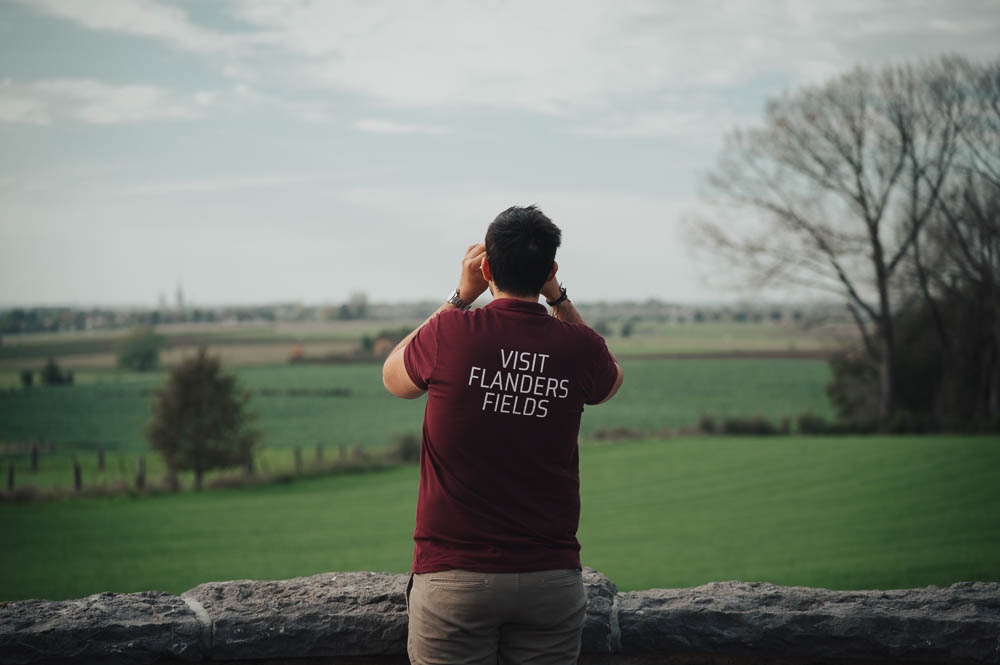Authentic WW1 Experience
For those seeking a truly authentic World War I experience, few places in the world offer the depth of history and immersion found in the Ypres Salient. Unlike battlefields that have been entirely reconstructed or erased by time, the Flanders Fields region still bears the scars of war, from preserved trenches and mine craters to rusted weapons and personal artifacts still being unearthed today. Walking through these sites is not just about seeing history—it’s about stepping into it.
The land around Ypres was fought over for four brutal years, and remnants of that devastation remain to this day. While memorials and cemeteries honor the fallen, the relics of war—helmets, bullets, barbed wire, and even unexploded ordnance—still emerge from the earth, known as the “Iron Harvest.” The region’s museums, interactive exhibits, and preserved trenches offer visitors the chance to connect directly with the past, experiencing the war as soldiers did over a century ago.
Hooge Crater Museum: A Treasure Trove of WWI Relics
For those fascinated by original WWI artifacts, the Hooge Crater Museum is a must-visit. Housed in a former chapel just outside Ypres, this museum offers one of the most extensive private collections of WWI items, all recovered from the battlefields of the Ypres Salient.
Inside, visitors will find helmets, rifles, artillery shells, uniforms, and personal effects of soldiers who fought in the trenches. What makes the museum particularly powerful is its life-like dioramas, where original artifacts are placed in reconstructed battlefield scenes, bringing history to life in a strikingly realistic way.
One of the most impressive aspects of the museum is its collection of military vehicles, including guns, stretchers, bicycles, and even tanks that played a role in the war. Seeing these massive pieces of machinery up close gives visitors a sense of the scale and industrial brutality of WWI.
Sanctuary Wood Museum and Preserved Trenches: A Walk Through Time
Few places offer the opportunity to physically walk through preserved WWI trenches, but at Sanctuary Wood, visitors can do just that. Located near Hill 62, this site is one of the best-preserved trench systems in Belgium, offering an unfiltered glimpse into the battlefield conditions endured by soldiers.
The trenches, dugouts, and shell craters remain largely intact, their earthen walls still lined with rusted corrugated iron and sandbags. Walking through these tight, muddy pathways, one can almost feel the weight of history—imagining the soldiers who once huddled here under artillery fire.
The on-site Sanctuary Wood Museum adds another layer to the experience. It houses a remarkable collection of WWI weapons, ammunition, and everyday items left behind by soldiers, including letters, gas masks, and personal diaries. Particularly unique are the stereoscopic photos, which, when viewed through old-fashioned viewers, provide a rare three-dimensional look at actual battlefield scenes—some of the most haunting and vivid WWI images ever captured.
The Iron Harvest: Relics of War Still Emerging Today
One of the most remarkable aspects of exploring the Ypres Salient is the ongoing discovery of WWI relics. Every year, farmers in the region unearth artillery shells, rifles, helmets, and even human remains—a phenomenon known as the “Iron Harvest.”
Because of the sheer volume of munitions fired in the Ypres Salient—millions of shells over four years—unexploded ordnance still poses a danger today. Bomb disposal teams regularly collect and safely remove these dormant weapons, a powerful reminder of how the war’s impact is still felt in Flanders.
For visitors, this adds another layer of authenticity to the experience. Unlike history contained behind glass cases, the story of WWI in the Ypres Salient is still being uncovered—sometimes literally.
